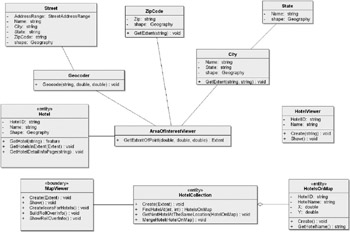Initial Use Case Modeling for the Mapplet
As this is an iterative and incremental agile project, we’ll go through many rounds of object modeling, coding, and testing before the project is complete. Because the planning in an Agile ICONIX project is driven by use cases, we need an initial set of use cases before we can begin planning at the use-case level. This stands to reason, of course: it would be difficult to plan when to deliver something to the customer without first determining what we’re delivering to the customer!
The list of use cases is likely to change fairly quickly as the project continues its inception and exploration phase. Naturally, we’ll need to revisit the plan frequently. Therefore, it’s important not to have to produce a complicated plan that is difficult and time consuming to maintain. The iteration plan that we use is nice and simple, and shows just enough information to allow us to proceed.
We should expect to see the list of use cases settle down by the time we begin the production phase. By this stage, most of the hard work will have been done. We’ll have a domain model for the whole system and a reliable set of use cases from which we can begin to design the system.
Recall from Figure 5-2. As you can see, this version is rough around the edges and definitely needs more work. One issue with this diagram is that the team earnestly began to identify fields and operations on the classes, when it was really a bit too early in the project to do this. (Actually, this diagram was produced during the JumpStart class and had thus been fleshed out to a certain extent, but it served as the starting place for the mapplet team.) Generally the domain model (at least at this early stage) should consist of just the domain object names and the relationships between them. The rest of the details will be filled in later during the design process.

Figure 5-2: Domain model after the original JumpStart workshop
Having said that, we’d certainly expect the domain model to be quite rough around the edges at this stage. The main thing is that the team created one and provided a foundation from which to begin the project. So it should be sufficient for us now to begin identifying the use cases.
The initial use case diagram is shown in Figure 5-3. Again, this is going to need a lot more work, but it’s good enough for us to produce the first release plan.

Figure 5-3: Use case diagram early in the project
We’ll review the domain model and use case diagram in Chapter 6. For now, let’s use what we have so far to take our first stab at the release plan.
EAN: 2147483647
Pages: 97